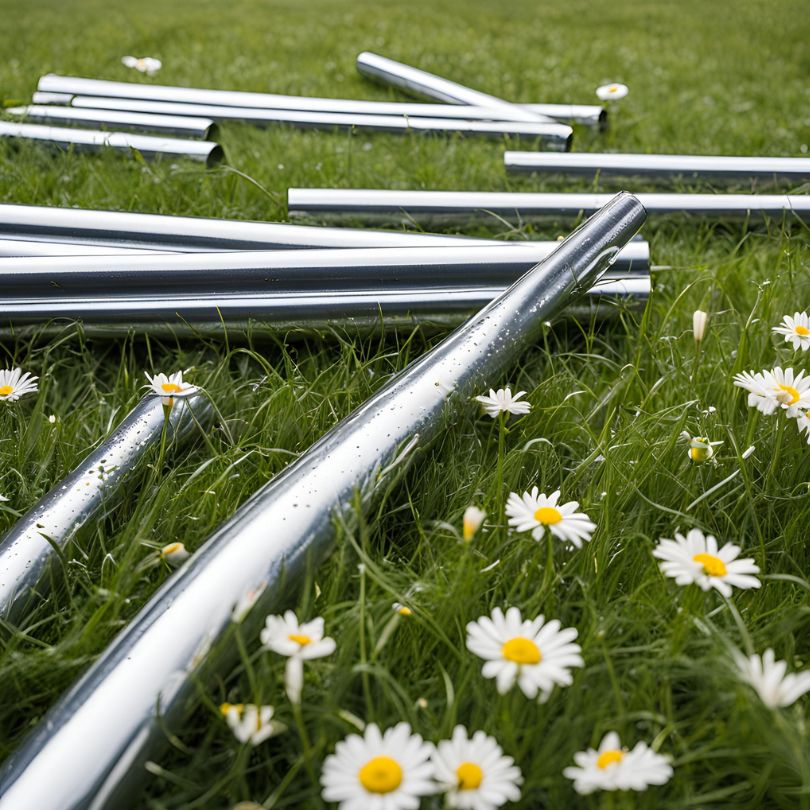What are the differences between a poled caravan awning and an air inflatable caravan awning
What are the differences between a poled caravan awning and an air inflatable caravan awning?
A poled caravan awning and an air inflatable caravan awning serve the same purpose of providing additional space and shelter when you're out camping, but they differ significantly in their setup and construction.
- Poled Caravan Awning: This type of awning uses a series of metal or fiberglass poles to create a sturdy framework for the awning canvas. The main advantage of poled awnings is their durability and stability; they tend to be more stable in windy conditions due to the solid frame. However, setting them up can be time-consuming and requires more effort, as you need to assemble the poles and ensure they are correctly tensioned. Poled awnings are generally stored in two bags, one for the poles and one for the awning fabric. This makes transporting, storing and carrying the awning easier.
- Air Inflatable Caravan Awning: Instead of poles, this awning type uses air beams that are inflated to form a rigid air frame structure. The primary benefit of air inflatable awnings is their ease of setup. They can be inflated quickly using a pump, significantly reducing the time and effort required. They are also generally lighter overall, when comparing a poled awning canvas and framework combined. However, where as a poled awning would be stored in two seperate bags, one for the awning canvas and the other from the frame, inflatable air awnings are generally all in one bag. This can make transporting an air awning heavier as it is all combined. Most air awning also reduce the risk of damaging your caravan if it were to collapse in stormy conditions, whereas a poled awning could.
Both types of awnings have their advantages, however, your purchase decision will ultimately be based on the type of camping you do and your personal requirements and needs. Poles caravan awnings are often chosen for seasonally pitched caravans, where as air inflatable awnings are extremely popular with touring caravan owners. With advances in manufacturing techniques and improved awning fabric, many manufacturers, including Camptech, now offer a range of air inflatable seasonally pitched awnings suitable for pitching throughout the camping season. Air inflatable caravan porch awnings and driveaway campervan air awnings are now by far the most popular awning types when a smaller, quicker more convenient awning option is essential.
Let’s take a closer look at the two awning types and compare their pro's and con's:
Pitching and Set Up:
Poled awnings:
- The awning framework (Poles) require assembly on site
- Generally take longer to set up, often 45-90 minutes
- May require more than one person to pitch, especially larger awning sizes
Inflatable awnings:
- Air inflatable air beams are sewn into the awning making for a simple setup.
- Usually pitched and ready to use in around 20-30 minutes
- Much easier for one person to set up alone
Storage and Transportation:
Poled awnings:
- Poled awnings are heavier due to the metal or fiberglass poles
- Poles and fabric are always packed separately, making them easier to transport
Inflatable awnings:
- Air awnings are often lighter overall than their poled equivalent
- Packed as one unit, which can make them bulkier to transport and store
Both awning types should be stored in a well ventilated, dry and secure environment off the ground if possible. Store safely away from strong smells, large variations in ambient temperatures and check on them often to ensure no damage has occured.
Stability and Weather Resistance:
Poled awnings:
- Extremely stable when correctly pitched and tensioned
- Regularly check pegging tension and use the correct tie down kits where necessary
- Risk of pole damage in strong winds
Inflatable awnings:
- Perform well in windy conditions due to flexibility
- Regularly check pegging tension and use the correct tie down kits where necessary
- No risk of bent or broken poles
Initial Cost:
Poled awnings:
- Less expensive than comparable inflatable models
- Spares and accessories are often less expensive and readily available
- Lower initial cost, especially for touring and occasional use
Inflatable awnings:
- High initial purchase price compared to poled awnings
- Spares and accessories can be a little harder to source
- Much easier to pitch and therefore more likely to be used more often
Durability and Maintenance:
Poled awnings:
- Replacement poles are readily available and are easily replaced
- Awning canvas is generally very similar for both air and poled awnings
Inflatable awnings:
- Air beams can fail, making a quick fix difficult although spares are available
- Regular checks on frame air pressure is recommended during temperature variations.
- Inflation valves may require maintenance over time.
Adjustability:
Poled awnings:
- Easier to adjust tension the awning fabric over the frame
- Regular re-pegging is advised to ensure the awning tensioned correctly.
Inflatable awnings:
- Air inflatable awnings require very little adjustment once pitched
- Occasional re-pegging is advised to ensure the awning remains stable and secure
We hope you found this blog useful. If you have any questions or would like to talk to one of our awning expert, please drop us a line or give us a ring and we'll be happy to help.
Happy Camping!

